Meet the Hydrography Team
Hydrography is the study of the water in the ocean: its temperature and salinity (how salty it is), and the concentrations of nutrients, chlorophyll, and oxygen. Phytoplankton at the base of the food chain use nutrients to grow; as they grow, they provide food and oxygen to other animals. The concentration of chlorophyll is a way to measure the amount of phytoplankton in the water. The hydrography team will measure the water using the CTD instrument. They will also take samples on the ice.
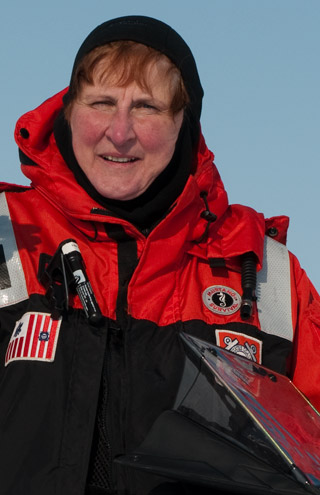 Nancy Kachel
Nancy Kachel
Scientist
University of Washington
What is your role in the expedition?
I am head of the Hydrography team. We collect data about water properties, like how temperature, salinity (saltiness), oxygen concentration, Light values (PAR and transmission) and fluorescence (a measure of how much chlorophyll or one celled plant material) is in the water as we send down our instrument ( a CTD). We also collect samples of the water at the depths we choose. From that we measure saltiness, nutrients, chlorophyll, dissolved carbon. We use our CTD to collect water for the other scientists who want it to conduct experiments about the growth taking place in the water, or to measure trace elements.
Why did you choose science as a career?
It always seemed like the most interesting, exciting subject in school, with endless possibilities for finding out things that people don’t yet know.I took a summer school class in geology, that intrigued me with its combination of science, travel and outdoor adventure.
I first read about ocean exploration when I was in third grade. There was a scientist named William Beebe who went down in an early submersible, who was featured in our little weekly newspaper. I was really sick in grade school, and loved reading everything I could find. One book I read by Francis Shepherd, an early marine geologist made a big impression. I always watched Jaques Cousteau about marine biology exploration, who had a popular TV show when I was in school. In college I loved studying geology. Then, I went to grad school in geological oceanography.
Where did you grow up?
Springfield, Ohio
What were your favorite and least favorite things about high school/college?
My least favorite things in high school was that we had to do a lot of repetitious math problems and English sentences every night. All our work was with fountain (ink) pens. If you made a blob on the page, you had to start that page over. I don’t think they even do that in school now, but we did learn to write neatly, and to think before we wrote. I got really excited when I got to college and was permitted to do math and science in pencil.
My favorite things involved learning about the world beyond my experience—history, math, science, foreign languages. I also loved music, especially, playing the piano.
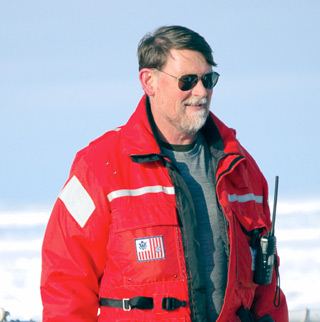 Edward D. (Ned) Cokelet
Edward D. (Ned) Cokelet
Scientist
National Oceanic and Atmospheric Administration
What is your role in the expedition?
I am a Principal Investigator in the Bering Sea Integrated Ecosystem Research Program and part of the Healy cruise's Hydrography Team. Hydrography refers to the study of the ocean's water properties - its temperature and salinity, nutrient, chlorophyll and oxygen concentrations. Temperature and salinity (saltiness) describe the basic physical state of the ocean and determine its density stratification. Nutrients are used by microscopic plants (phytoplankton) at the base of the ecosystem to grow and provide food and oxygen for animals. The chlorophyll concentration is a measure of the amount of phytoplankton available. I will measure these properties in 3 ways. First, I will be in charge of one of two 12-hour CTD watches each day. We will lower the CTD (conductivity temperature depth) instrument package to the ocean bottom over 200 times. Second, I will also use water pumped via the ship's underway seawater system to measure the same quantities continuously near the sea surface. These measurements will provide maps along the ship track. Third, I will core the sea ice, measure its thickness and temperature and bring samples back to the ship to melt for further observations. The hydrographic survey information will set the context in which other observations are made.
Why did you choose science as a career?
I wanted to be a scientist from my earliest memories. I was a good student and enjoy thinking, problem solving, mathematics and science. I was in grade school in the 1950s when the United States accelerated education in science and engineering to meet international challenges in technological development brought on by the race for space exploration. This gave me the opportunity to pursue my education. I decided to become an oceanographer at about age 10. An oceanographic ship (R/V Brown Bear) was making measurements in front of my house on Hood Canal, WA. I rowed my skiff out from shore and was invited aboard. It looked just the thing - science, out-of-doors, on the ocean, and a new and upcoming discipline!
Where did you grow up?
I grew up in Belfair, WA, on Hood Canal - a fjord arm of Puget Sound. My community was a small one with just 42 kids in my graduating high school class.
What were your favorite and least favorite things about high school/college?
Favorites: science and math classes but only those subjects I thought were "worthwhile" and history. Least favorites: English class (but I paid attention anyway, and now I know that language skills are some of the most important skills to have) and Physical Education class (but now I cycle, ski and hike and get great pleasure from being fit).
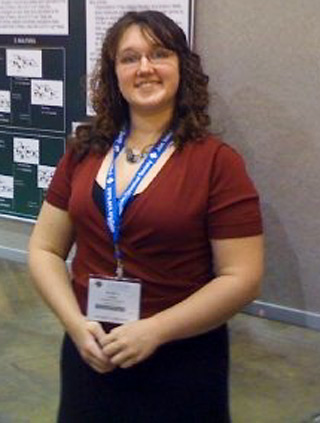 Jessica Cross
Jessica Cross
Graduate Student
University of Alaska Fairbanks
What is your role in the expedition?
I'm a first year graduate student, and this is actually my first research cruise ever! In addition to being a critical learning experience, this is also where I'll be taking my first ever set of data to put towards my doctorate degree. On the boat, I'll be working with the team that collects all of the hydrographic data for the cruise.
Why did you choose science as a career?
Science has always captured my imagination. It our closest thing to magic and man's most fundamental mystery. Although there is lots to science--I'm a chemist by training-- I am most in love with the sea. Every day, the beauty of our oceans-- from the giant to the molecular--impresses me. The world beneath our waters is one of the last great frontiers left unexplained and even undiscovered on our planet, and I chose to be a scientist so that I could be a front-line explorer.
Where did you grow up?
Although I now live and work in Alaska, I originally grew up in central Florida. Most of my family still lives there, so I have a great getaway location during the long winter months!
What were your favorite and least favorite things about high school/college?
When I was in high school, my absolute least favorite thing was passing period. My school's hallways were designed to look like an alligator from above, and they bottlenecked really badly! There was never enough time to make it back and forth to the bathrooms or my locker without being late. In college, I really hated walking back and forth to class during winter rain; no matter what, I always got soaked, and I was always cold from waking to sleeping. I'd still say it was completely worth it, though; I had a blast in highschool and in college. I made some of my best friends, got a great education in both cases, finally learned to sing and discovered science. Despite the cold and the jammed hallways, I'd do it all over again in a heartbeat.
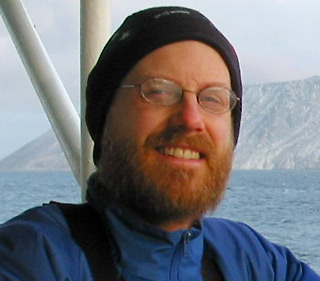 Daniel Naber
Daniel Naber
Technician
University of Alaska Fairbanks
What is your role in the expedition?
I will be assisting the folks from NOAA’s PMEL (Pacific Marine Environmental Lab) with CTD operations/water collection, filtering of Chlorophyll samples and taking sea-ice cores to be melted and sampled.
Why did you choose science as a career?
I wanted a job that would get me outside and take me into the wilderness.
Where did you grow up?
I grew up in southern Minnesota but moved to Fairbanks, Alaska when I was 19 to attend the University of Alaska to study Geology and have never left except to travel the world for work and play. I’ve lived in Fairbanks for 16 years now.
What were your favorite and least favorite things about high school/college?
Having a lot of friends and being very active in athletics really made me focus and manage my time when it came to my studies. I was an A student in high school. I enjoyed learning new things but I would get bored with my head just in books. I didn’t enjoy the stress I put on myself to be a perfectionist.
I was also very busy in college, working as a Resident Assistant in the dorms, DJ’ing at the campus radio station, and working as a student assistant for a Geology professor. All that activity was fun, made my study time more productive and again I did very well. But in college I learned to have some fun too!
My advice to budding scientists is to take your studies seriously. There are millions of kids in India and China that are very hungry to get to our country and work here, which I have no problem with. If American kids can’t be bothered with working/studying seriously but want to just sit on the couch and watch TV then service jobs is about all they can expect to get. Be sure to get a broad background of experiences, they will all expand your job possibilities.
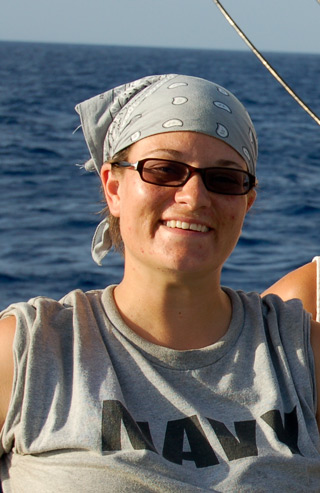 Brandi Murphy
Brandi Murphy
Technician
Scripps Institution of Oceanography
What is your role in the expedition?
Mine is a quiet role, aiding Scott Hiller in the operation of the CTD. Namely keeping the equipment functioning correctly so the science party can take home plenty of data and information.
Why did you choose science as a career?
Science is so dynamic. Techniques and processes are always changing and improving. While the scientific method remains unchanged, it's application through new technologies means science is so different than it was in the past and will be different in the future. I wanted to be a part of something never done before. Everyday here in science I find myself learning and developing new ideas.
Where did you grow up?
I grew up in Northern Idaho. Rural and nowhere near the ocean, I found myself fascinated by the sea's uniqueness and complex systems. I loved Idaho and if it were near the ocean I would be back there in a heartbeat. There are a lot of places for outdoor exploration and I think it helped develop my inquisitive nature.
What were your favorite and least favorite things about high school/college?
I loved all the sciences and math. Some of my favorite assignments in high school were drawing a geologic map of Idaho, collecting flowers for a biology project and dissecting a frog. Writing anything is easily my least favorite. Give me a math test any day, but ask me to describe a process in words and I am miserable. I can do it and usually I write well, I just really don't like it.
More Hydrography Team coming...
Calvin Mordy
Scientist
Aquatic Solutions
David Kachel
Technician
National Oceanic and Atmospheric Administration
Scott Hiller
Technician
Scripps Institution of Oceanography


